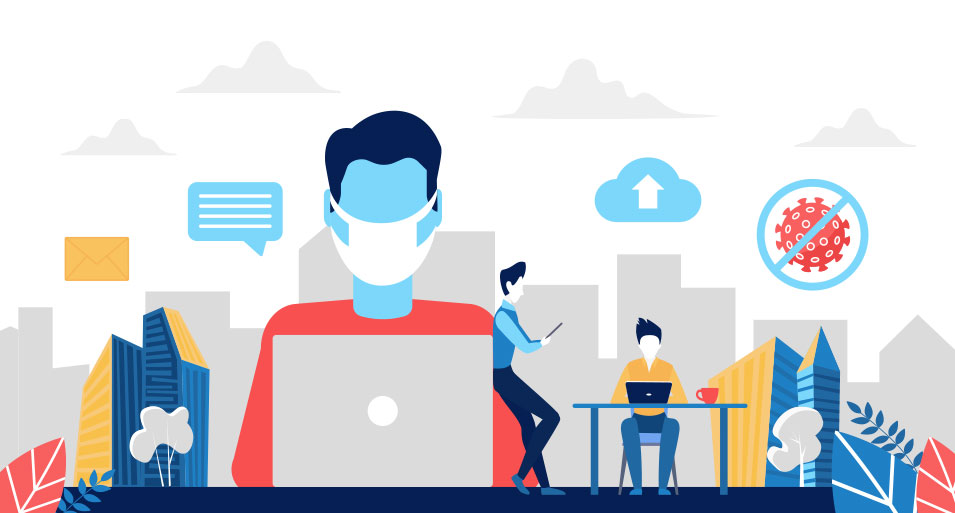
27 Jun 2021 Business Solution During Pandemic
The pandemic is changing business processes on a large scale and its impact will continue to be seen even after the pandemic.
Business Landscape Change
The COVID-19 pandemic has affected many aspects of life including business. The pandemic has made business actors, especially SMEs, have to adapt to changes in business processes that reduce direct contact. Starting from distribution, marketing, to collaboration with other parties, things have changed and have to follow health protocols.
Online Business Endurance
Indonesian retailers have realized the reality of shifting their services online amidst the fast-paced online shopping trend. A survey from PricewaterhouseCoopers (PwC) showed that online purchases have even surpassed in-store purchases (physical stores).
When asked about how often they “shopped online” for daily and weekly needs, 50% of Indonesian respondents said they often “shopped online”, up from 37% in 2019.
In addition, 42% said they were still shopping at physical stores this year (2020), down from the previous 52% in 2019, indicating that shopping at physical stores was less attractive for daily-weekly shopping.
E-commerce has attracted many consumers in Indonesia even before the Covid-19 outbreak. E-commerce is also one of the main drivers that makes Indonesia the country with the largest digital economy value in Southeast Asia; reached $40 billion in 2019 and is predicted to increase to $130 billion by 2025.
E-Commerce VS Marketplace
Selling online has become a powerful strategy during a pandemic like today.
It’s time for Small-Medium Businesses to sell their products online, but what platform should you use to sell online?
With your own E-Commerce site or with a Marketplace (Tokopedia, Bukalapak, Shopee, etc.)?
Many people will prefer the marketplace because it’s easy to get started. But many people also choose to create their own e-commerce to increase brand awareness.
E-commerce and marketplaces have their advantages and disadvantages, here are some that you can take into consideration.
E-Commerce (online store website)
Advantages:
- Full control & free to do Branding
By having their own e-commerce site, business owner have the freedom to improve it to their liking.
Business owner (entrepreneur) can have design and look of the site that reflects their brand. The content on the e-commerce website can be controlled without any limitations: unlimited products, pricing, promotions. Entrepreneur can also create their own content such as videos, articles, tips & tricks that can increase branding of the product. - Little to no dependence to other parties
By having their own site, business owner don’t have to depend on other platforms for their revenues.
This means No-commission-cut on sales, which means a bigger profit margin.
Disadvantages
- Need to develop strategy to reach consumers
By having their own e-commerce website, entrepreneurs must develop their own strategies to get traffic.
To increase traffic, entrepreneurs need to advertise in order to reach a wider audience. - Requires Investment
Entrepreneurs must invest in website development (one time cost) and day-to-day management (recurring cost).
Investment includes: domain purchase, website (eCommerce) development and hosting (server) costs.
Marketplace
Advantages
- Easier to get started
With marketplace, in a few easy steps of registration, business owners can start selling. In marketplace, products and templates of products are readily available, entrepreneurs only need to upload the product they want to sell. - Does not require large investment
Entrepreneurs can start selling on the marketplace for free and almost without investment. There will only be a transaction fee deduction from the marketplace owner for each sale.
Disadvantages
-
High level of competition
One of the biggest challenges of selling on a marketplace is the high level of competition, many stores will sell similar products and most customers will only look at the prices at first. -
Low brand awareness
Another drawback of the marketplace is that entrepreneurs will find it difficult to build their brand. Customer have to click on the store profile picture in order to see the entire offerings of your shop.
There is very little ‘personalization’ on your store front. Business owner can only do branding through store profiles such as banners, descriptions, and feeds while the main display of the marketplace will always be the same for all visitors.
“Stay at Home” Economy
Entering the second half of 2021, it is estimated that e-commerce will grow rapidly. Minister of Cooperatives and Small and Medium Enterprises Teten Masduki said that based on the survey, people’s consumption patterns in the midst of the COVID-19 pandemic are gradually changing, namely switching from offline to online. In fact, according to Teten, “Stay at Home Economy” will become an economic trend in the future.
“People are experiencing a change in consumption patterns from being offline to online. It is even predicted that the Stay At Home Economy will become a trend in the future,” explained Teten in an official statement at the Media Center for the Task Force for the Acceleration of Handling COVID-19, Graha National Disaster Management Agency (BNPB), Jakarta, Tuesday (28/4).
Magento as an E-Commerce Solution
Similar to building an offline store that requires careful planning, creating an online store (eCommerce website) requires the right infrastructure. There are many eCommerce solutions on the market, the eCommerce solution we focus on at Wise Design Lab (WDL) is Magento.
Read more about Magento at the following page.







